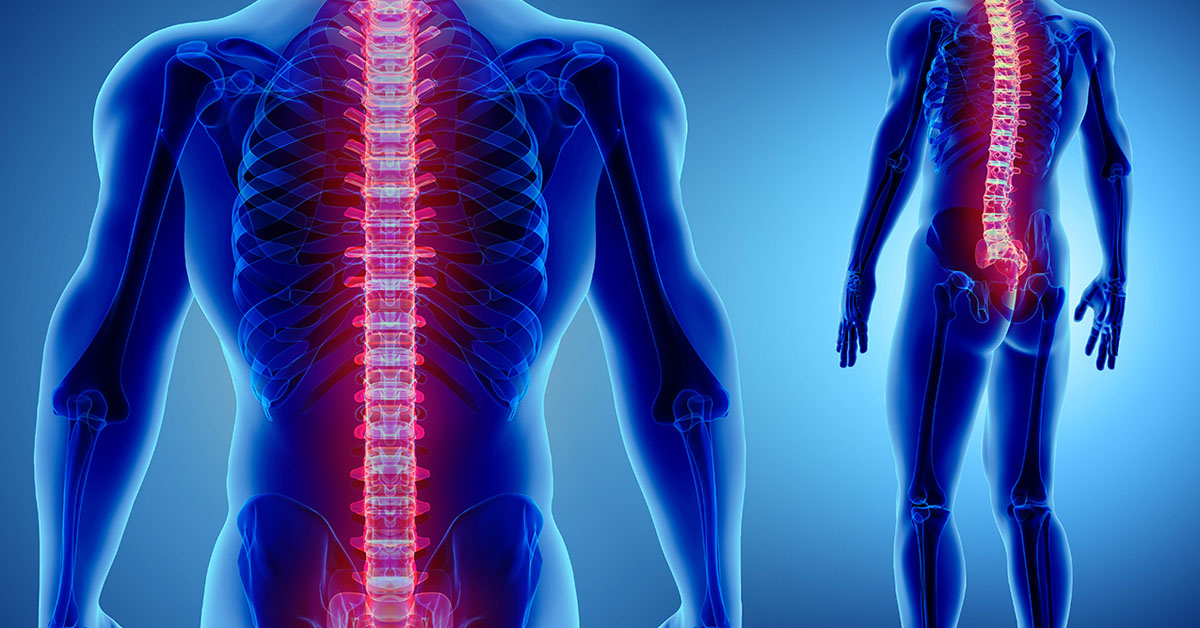Request an Appointment
Please call our office at 816-363-2500 to make an appointment. Don’t forget to bring your imaging studies with you.
Sacroiliac Joint Pain

Low back pain and the sacroiliac joint
Determining and treating the source of low back pain is a complicated issue because it can be due to multiple causes that can occur by themselves or concurrently. Also, low back pain symptoms can vary and can manifest in locations other than the lower back. Some of the conditions that can cause low back pain include:
- Bulging or herniated discs
- Cauda Equina Syndrome
- Sciatica
- Spinal degeneration
- Spinal stenosis
- Osteoporosis
- Skeletal irregularities
- Fibromyalgia
- Spondylitis
- Sacroiliac joint problems, like sacroiliitis or inflammation of the sacroiliac joint
Scientific studies have shown that for many individuals there are often multiple, coexisting conditions that are the source of low back pain. Often, a single condition is not soley responsible for an individual's low back pain. Previously, the sacroiliac joint was an area that was routinely ignored when diagnosing and treating low back pain.
Recent scientific studies have demonstrated that the sacroiliac, or SI, joint as a source of low back pain can go undetected. Some studies have estimated that SI joint pain is a source of pain in 15%-25% of patients with low back pain. Therefore, SI joint generated pain is gaining attention when diagnosing and treating low back pain.
What is Sacroiliac Joint Pain?
Essentially, the two SI joints are where the upper and lower body meet. Specifically, the SI joints are where the lower portion of the spine connects to the pelvis. The primary function of the SI joints are to transfer weight from the upper body to the lower body.
What causes Sacroiliac Joint Pain?
Sacroiliac joint pain may be due to conditions within the joint. Some of the conditions that may cause SI joint pain include:
- Traumatic injury to the SI joint from a sudden impact, like a fall or an accident
- Arthritis of the SI joint
- Traumatic birth
- Pregnancy that results in an altered gait
- Previous lumbar spine surgery
- Infection of the SI joint (this is a rare condition)
Symptoms and Diagnosis
Symptoms of SI joint pain commonly include pain in the low back, buttocks, or groin. This pain may extend down the legs and into the feet. SI joint pain can be aggravated by:
- Prolonged standing or placing more weight on one leg
- Sitting
- Bending
- Climbing stairs
- Running or taking large strides while walking
SI joint pain can be difficult to diagnose because it may be mistaken for other causes of low back pain. To properly diagnose the SI joint as a source of pain, a physician will need to consider the patient's medical history and physical exam results. The doctor may use imaging studies, like X-ray, magnetic resonance imaging, or MRI, or computerized tomography, or CT, scans. However, for a variety of reasons, imaging studies alone are often not sufficient to properly diagnosis SI joint dysfunction. Other tests may use clinical results, including testing a sample of fluid from within the joint if an infection is suspected
If tests indicate that the SI joint may be the source of low back pain, then an injection of anesthesia should be done to confirm the diagnosis. Here, a physician will inject anesthesia directly into the joint to see if it temporarily relieves the pain.
Treatment options for sacroiliac joint pain
Several options are available to treat SI joint pain, including rest and medications. Physical therapy may also be recommended. This will include stretches specifically for maintaining joint flexibility, and exercises to strengthen the muscles that stabilize the SI joint. Your doctor may recommend the use of a sacroiliac belt, which is a device used to stabilize a loose SI joint. The belt wraps around the hips and stabilizes the SI joint by squeezing the hips together.
Other treatment options may include injections, such as a local anesthetic and an anti-inflammatory agent are injected directly into the SI joint. Pain relief, generally, is temporary but may last several months. More chronic pain may be treated with radiofrequency denervation, a procedure that damages or deactivates the part of the nerve that causes pain.
If the condition is especially severe, surgery may be necessary. One procedure stabilizes the joint by fusing the two bones of the SI joint together.

 The Highest Quality of Neurosurgical Care
The Highest Quality of Neurosurgical Care